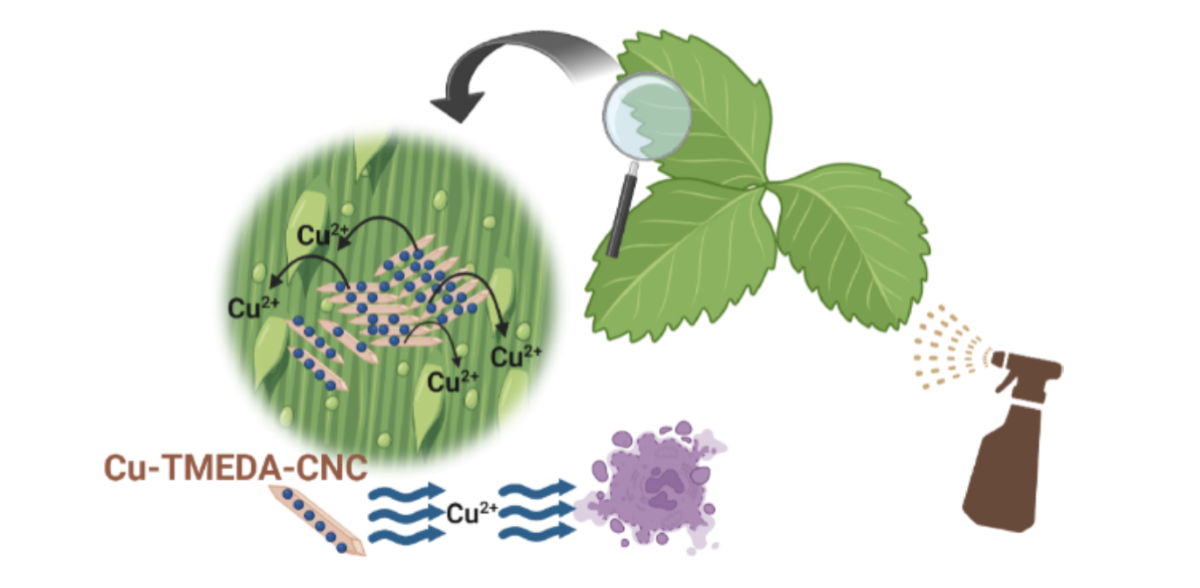Pesticides with Metal Nanoparticles and Cellulosic Nanomaterial Complex (RFT-705)
Invention Summary
Bacterial leaf streak (BLS) disease devastates grain crops such as wheat and barley, resulting in significant yield losses. This technology involves the development of environmentally friendly pesticides utilizing metal nanoparticles (copper and silver) stabilized by chemically modified cellulose nanocrystals (CNCs). The CNCs enhance adhesion to plant surfaces, reducing nanoparticle aggregation and wash-off, thereby providing prolonged antibacterial protection. The CNCs are chemically modified with tosylation and functional groups like diamines or tertiary amines to stabilize the metal nanoparticles, ensuring efficient ion release for extended periods.

Benefits
- Prolonged Effectiveness-enhanced adhesion to plant surfaces reduces the need for frequent applications
- Environmental Safety-biodegradable CNCs minimize soil and water pollution
- Enhanced Antibacterial Properties-effective against Xanthomonas translucens, reducing the impact of BLS
- Reduced Chemical Usage-less frequent applications and lower quantities of bactericides needed
Applications
- Agricultural
- Crop Protection
Patent
This technology has a U.S. Patent Pending and is available for licensing/partnering opportunities.
Contact
NDSU Research Foundation
info(at)ndsurf(dot)org
(701) 231-8173
NDSURF Tech Key
RFT, 705, RFT705
Inquire about this technology >